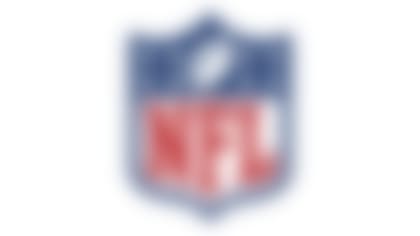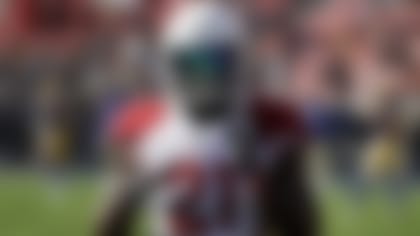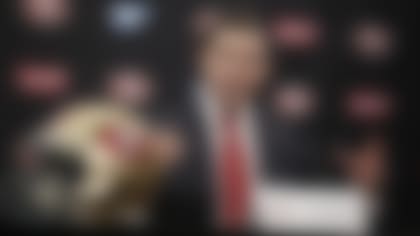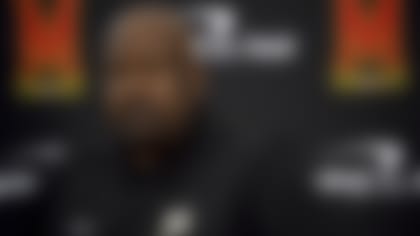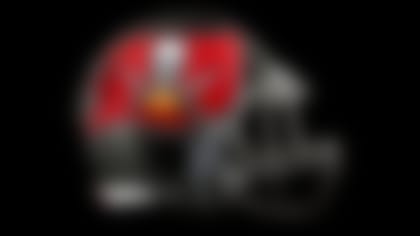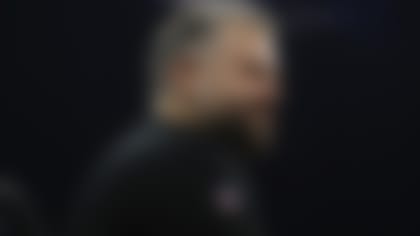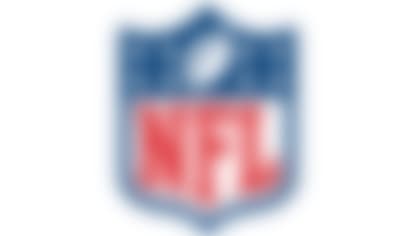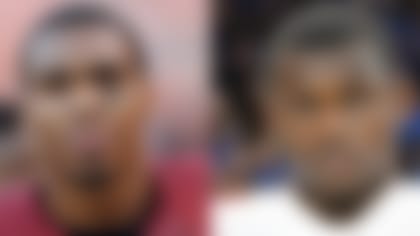Editor's note: Below is the full decision issued by Paul Tagliabue regarding the Saints bounty appeal hearing:**
PAUL TAGLIABUE
December 11, 2012
In the Matter of New Orleans Saints Pay-for-Performance / "Bounty"
FINAL DECISION ON APPEAL
INTRODUCTION AND SUMMARY
The matter before me involves appeals by four present or former New Orleans Saints' players who are challenging findings of misconduct and disciplinary actions taken by Commissioner Roger Goodell on October 9, 2012. The players are Anthony Hargrove, Scott Fujita, Will Smith and Jonathan Vilma. The imposed discipline was the result of the National Football League's (the "NFL") investigation of allegations concerning a pay-for-performance program (the "Program") conducted by the Saints during the 2009 through 2011 seasons to reward particular plays by Saints' defensive players that ultimately incentivized rendering opposing players unable to play, and allegations concerning a specific bounty being placed on Brett Favre to injure him during the NFC Championship game against the Minnesota Vikings in January 2010.
The present appeals are a small piece of a much larger picture. Senior Saints' coaches conceived, encouraged and directed the Program. While it included performance rewards for recovering fumbles, interceptions and the like, it also came to include higher cash incentives to "cart-off" or "knockout" an opposing player. The Program eventually led to allegations of a bounty being placed on Favre. Making matters far more serious -- as well as challenging for Commissioner Goodell and League investigators -- Saints' coaches and managers led a deliberate, unprecedented and effective effort to obstruct the NFL's investigation into the Program and the alleged bounty. Commissioner Goodell found and properly characterized the Program, any bounty and the obstruction to be organizational misconduct by the New Orleans Saints. The Commissioner determined the misconduct to be "particularly unusual and egregious," "totally unacceptable" and to constitute "conduct detrimental" to the game of professional football and the NFL and to be a violation of the NFL Constitution and Bylaws. Commissioner Goodell fined the Saints $500,000; forfeited the team's second-round draft selections in 2012 and 2013; suspended the Saints' head coach Sean Payton for the entire 2012 NFL season; suspended Saints' general manager Mickey Loomis for eight games and fined him $500,000; suspended Saints' assistant head coach Joe Vitt for six games and fined him $100,000; and suspended the now former Saints' defensive coordinator Gregg Williams indefinitely. These suspensions thus deprived the Saints of vitally important coaching and leadership talent, and they represented a severe competitive penalty for the Saints' team, its fans and indirectly for the New Orleans / Gulf Coast region. Commissioner Goodell's findings and the resulting suspensions of these Saints' personnel are final and no longer subject to appeal.
Unlike the Saints' broad organizational misconduct, the player appeals involve sharply focused issues of alleged individual player misconduct in several different aspects of the Saints' Program. The challenges involving the four players to Commissioner Goodell's October 9, 2012 decisions can fairly be summarized as follows:
Scott Fujita: Commissioner Goodell found that Fujita offered his own incentive program to reward big plays, not including rewards for cart-offs and knockouts, and that he failed to report the existence of the Program. Two dozen other Saints' defensive players were aware of the Program, many participated in it and all were present at defensive team meetings that are central to the events under review here. Fujita was suspended for one game.
Will Smith: Commissioner Goodell found that Smith endorsed, agreed to and financially contributed to the Program. Many other Saints' defensive players participated in the Program similar to Smith without suspension. He was suspended for four games.
Jonathan Vilma: Commissioner Goodell found that Vilma endorsed, agreed to and financially contributed to the Program and offered a $10,000 bounty reward to any Saints' player who could knock Vikings' quarterback Brett Favre out of the Saints- Vikings NFC Championship game in January 2010. The evidence as to whether Vilma made such an offer is sharply disputed, but other key points are undisputed: the Saints' coaches conducted, directed and choreographed all defensive team meetings; in the same defensive team meeting where Vilma allegedly offered a bounty, the Saints' defensive coordinator, Gregg Williams, admits that he offered a $5,000 bounty reward of his own to knock Favre out of the game; and Williams admitted that he was the responsible team official who unfortunately let the team meeting get out of control. The NFL assessed fines totaling $30,000 against certain Saints' players after the Vikings game, none of which included any player here, and no Saints' player was suspended for conduct on the field. Vilma was suspended for the entire 2012 NFL season.
I affirm Commissioner Goodell's factual findings as to the four players. I conclude that Hargrove, Smith and Vilma -- but not Fujita -- engaged in "conduct detrimental to the integrity of, and public confidence in, the game of professional football." However, for the reasons set forth in this decision, I now vacate all discipline to be imposed upon these players.
Although I vacate all suspensions, I fully considered but ultimately rejected reducing the suspensions to fines of varying degrees for Hargrove, Smith and Vilma. My affirmation of Commissioner Goodell's findings could certainly justify the issuance of fines. However, as explained in my discussion below, this entire case has been contaminated by the coaches and others in the Saints' organization. Moreover, the League has not previously suspended or fined players for some of the activities in which these players participated and has in the recent past imposed only minimal fines on NFL Clubs -- not players -- of a mere $25,000 or less.
Given the three years of investigation, discipline and intense acrimony surrounding the Saints' Program and the alleged bounty, it is in the best interest of all parties for me to resolve this matter as completely as possible, so that everyone involved with the NFL has this matter put to rest, enabling the League and the NFL Players' Association ("NFLPA") to move on to address the many serious issues of player safety that they confront. To be clear: this case should not be considered a precedent for whether similar behavior in the future merits player suspensions or fines; rather, I have decided not to issue fines this time for the reasons stated in this decision and the sake of the best interests of all involved in professional football.
I strongly condemn the misconduct of the Saints' coaches found by Commissioner Goodell and confirmed in the record developed during this appeal. That severe misconduct played a substantial role in my deciding whether to sustain, in whole or in part, or vacate the discipline to be imposed upon these four players. Equally, in vacating the players' suspensions I do not in any degree condone their behavior. I do not approve any of the misconduct in which Commissioner Goodell found the players to have engaged, though I do not find Fujita's conduct equivalent to the other players. But each player made choices that do not reflect favorably on him. Moreover, there is evidence in the record that suggests that Commissioner Goodell could have disciplined a greater number of Saints' players for the events that occurred here. This sad chapter in the otherwise praiseworthy history of the New Orleans Saints casts no executive, coach or player in a favorable light.
MY APPOINTMENT AND THE APPEALS PROCESS UNDER THE COLLECTIVE BARGAINING AGREEMENT
On October 19, 2012, Commissioner Goodell designated me to serve as the appeals hearing officer on terms set forth in the August 4, 2011 NFL-NFLPA Collective Bargaining Agreement ("CBA"). He emphasized that I would have "full authority and complete independence to decide this matter." In addressing the issues here, I am guided by rules and policies embedded in the CBA. I take due note of all its relevant provisions and, as applicable, the provisions of the NFL's Constitution and Bylaws and related League policies.
I am further guided by clear legal precedents that afford arbitrators appointed under collective bargaining agreements broad authority to determine the procedure and ultimate outcomes on the merits of matters entrusted to them. Such an arbitrator is "to bring his informed judgment to bear in order to reach a fair solution of a problem." United Steel Workers of Am. v. Enter. Wheel and Car Corp., 363 U.S. 593, 596 (1960). Arbitrators in union-management disputes have wide latitude in shaping remedies and relief since they may need "flexibility in meeting a wide variety of situations. The draftsmen [of the CBA] may never have thought of what specific remedy should be awarded to meet a particular contingency." Id. Ultimately, it is the arbitrator's judgment that matters because that "was bargained for." Id. at 599. The arbitrator "is not a public tribunal imposed upon the parties by superior authority which the parties are obliged to accept¡K. He is rather part of a system of self-government created by and confined to the parties." United Steel Workers of Am. v. Warrior and Gulf Nav. Co., 363 U.S. 574, 581 (1960).
Under these principles and the terms of Article 46, I am not reviewing Commissioner Goodell's October 9, 2012 findings and conclusions de novo. If the parties had intended such a review, they would have written it into the CBA. Instead, I am giving appropriate deference to Commissioner Goodell's reasonable findings and am applying the same standard of review to findings of violation and to findings underlying the level of discipline. I am not substituting my judgment for the Commissioner's judgment, except insofar as I have received and considered new material information of which the Commissioner was unaware. In this instance, based on both the prior record and additional information, I am reviewing the discipline for consistency of treatment, uniformity of standards for parties similarly situated and patent unfairness or selectivity.
I draw upon forty years of experience with the League both as outside counsel and ultimately seventeen years as Commissioner. As part of my experience and decision making, I am not only authorized but obligated to be cognizant of the "rules of the shop" in the NFL, namely, the patterns of operations and practices of all the thirty-two NFL teams as they have evolved over the years. I am confident that with my experience and the processes I employed in hearing this appeal, the decisions I have reached fully comport with the standards applicable to arbitrators who are obligated to make judgments determining conduct detrimental under Article 46 of the 2011 CBA.
Article 46 of the CBA establishes a carefully structured framework for the resolution of various types of disputes involving the imposition of player discipline by the NFL Commissioner. Section 1(a) addresses fines or suspensions imposed on players for certain conduct on the playing field; and it also deals with "action taken against a player by the Commissioner for conduct detrimental to the integrity of, or public confidence in, the game of professional football."
There are vital reasons why all NFL-NFLPA Collective Bargaining Agreements since the 1970s have consistently given the Commissioner the exclusive and broad authority to decide what constitutes conduct detrimental. The integrity of and public confidence in the game of professional football are essential to the playing of the game itself and are critical to public interest in NFL football and to public respect for all those participating in NFL football -- owners, coaches, players, officials and executives. Equally important, the matters that can affect such integrity and public confidence evolve and change over time depending on both developments within and external to the League, and the parties to the CBAs have agreed not to operate with a static or frozen definition of conduct detrimental. Immediately upon my appointment, I began my review of the extensive Record on Appeal. I convened several pre-hearing conferences with the parties' counsel; received extensive briefs regarding the standard of review and burden of proof, as well as findings of fact from counsel; requested and reviewed hundreds of additional pages of documents obtained from the parties; ordered, received and reviewed certain investigative memoranda to be produced to players' counsel; and conducted four full days of evidentiary hearings in which twelve witnesses testified and were subject to rigorous cross-examination by counsel. In issuing my decision today, I have carefully and seriously considered all the parties' contentions, and I have taken fully into account all party submissions, witness testimony and counsel arguments.
FRAMEWORK FOR CONSIDERING PLAYER DISCIPLINE
Before turning to the specific issues before me, it is important to establish an understanding of how the NFL has approached important turning points related to the culture and safety of the game. In this context, it is critical to recognize that player safety in the NFL is the responsibility of everyone involved in the League. Strict enforcement of safety rules and policies serves the interests of all players and teams and is essential to the integrity of and public confidence in the game. But safety concerns have evolved -- and will continue to evolve -- significantly over the years.
For this reason, in a letter to counsel shortly after being appointed, I encouraged the parties to pursue a negotiated settlement, emphasizing that: The ultimate issue [here] is neither pro-player nor antiplayer. A fundamental principle of the game of professional football is that strict enforcement of playing rules with respect to player safety is essential for the League, the teams and all players. The NFL, its teams and its players have long recognized that overly aggressive playing tactics often create unacceptable retaliation cycles that encourage impermissible violence on the playing field. The use of aggressive tactics is a two-way street: one team employs them in a given game or in a given season against opposing players, including players routinely exposed in defenseless positions. In response, opponents adopt the same or similar tactics in their ensuing games in the same or ensuing seasons against the original team's players. As the imitation, retaliation and aggressiveness escalate so does the likelihood of injury to the exposed targets. . . .Neither a competitive advantage nor any other justification warrants the encouragement of overly aggressive tactics or the cycle of retaliation that often ensues. Any such tactics are detrimental to the integrity of the game of professional football. 1 Although I have not annotated every fact stated in my Final Decision, each fact is taken directly from the Record on Appeal and the exhibits and transcripts from the four days of hearings that I conducted as part of this appeals process. All references to specific facts are those fully documented in the Record on Appeal and the appeals hearings.
Unfortunately, settlement efforts proved unsuccessful.2 Nonetheless, player safety remains fundamental, and there are compelling reasons for strict enforcement of safety rules and policies. But there are equally compelling reasons to think more broadly about the most effective and equitable ways to harmonize the sometimes perceived conflicts of interest among teams, coaches and players in enforcing safety rules.
The evidence before me reflects the realities of NFL team workplaces: sometimes prohibitions and policies that seem clear in the team front office or the League office become blurred in team meeting rooms and on practice fields. Techniques or programs intended to prepare teams to win sometimes ignore or contradict League rules and policies. Teams mimic each other. Coaches, staff and players move from team to team, carrying their techniques and programs with them. Sometimes techniques and programs are misdescribed or become modified or mismanaged. Shortcuts turn out to be dead ends.
As Commissioner Goodell has suggested, part of the player safety and injury challenge in the NFL may be an issue of culture. Presumably, this could mean, at least in part, that there is a pervasive, entrenched and undesirable acceptance of overly aggressive play -- including financial rewards, intimidation tactics and "trash talk" to encourage aggressive play. Such a culture could include dismissive attitudes about player injury risks and player safety. Commissioner Goodell clearly recognizes that the responsibility for player safety in the NFL starts at the top, with the Commissioner and the entire League office. His recent forceful remarks at the Harvard School of Public Health about the NFL's role in protecting the health and safety of athletes -- not just in the NFL and football, but in all sports and all levels of play -- have received wide attention. Similarly, the League's long-term initiative with the U.S. Army to enhance the health of U.S. soldiers and NFL players by sharing information, providing education and engaging in discussion on concussion and health-related issues affecting both organizations is unprecedented. And the League has sharply increased its grant funding to organizations such as the Foundation for the National Institutes of Health for research to include accelerating the pace of discovery to support the most innovative and promising science of the brain, including: chronic traumatic encephalopathy; concussion management and treatment; and the understanding of the potential relationship between traumatic brain injury and late-life neurodegenerative disorders, especially Alzheimer's disease.
In this context, confronted with the events here, Commissioner Goodell correctly set out aggressively to address them. But when an effort to change a culture rests heavily on prohibitions, and discipline and sanctions that are seen as selective, ad hoc or inconsistent, then people in all industries are prone to react negatively -- whether they be construction workers, police officers or football players. They will push back and challenge the discipline as unwarranted. As reflected in the record in the present appeals, they will deny, hide behind a code of silence, destroy evidence and obstruct. In other words, rightly or wrongly, a sharp change in sanctions or discipline can often be seen as arbitrary and as an impediment rather than an instrument of change. This is what we see on the record here. 2 I note with strong disapproval that one or more parties here improperly leaked confidential information from private settlement negotiations to the public despite the clear agreement of all parties prohibiting such conduct.
For whatever reasons -- entrenched pay-for-performance practices thought to be common in the NFL, bad judgment by coaches or lack of clarity in the rules or their enforcement -- the Saints' coaches here resented the League's investigative / enforcement efforts and improperly resisted and blocked them. As Coach Williams put it, the strategy was to "deny, deny, deny" (New Orleans Saints Article 46 Appeal Proceedings Hr'g Tr. 1105:5-11), possibly in part to avoid tarnishing what everyone saw as an incredibly important and well-earned SaintsSuper Bowl victory.
As NFL counsel stated at the opening of the hearings here, the "code of locker-room silence is, indeed, strong" in the League. (Hr'g Tr. 167:4-6.) NFL counsel thus noted Jonathan Vilma's statement to the Commissioner in a September meeting, "What we say in-house is kept in-house." (Hr'g Tr. 142:2-3.) And NFL counsel continued, comparing this culture to the "blue wall of silence in another context [that] also makes investigating and proving police corruption quite difficult." (Hr'g Tr. 168:7-10.)
Regardless of what caused the Saints' coaches so strongly to resent and obstruct the League's investigation, it is critical to focus on and get to the root of these questions because clearly a League policy of "strict compliance and strict enforcement" based on well-grounded concern for player safety has not yielded a constructive outcome here. Often one way of avoiding or minimizing the severe reaction of parties subject to discipline -- such as Saints' coaches and players in this matter -- and the unconscionable obstruction led by non-player personnel is to eliminate the motivation to deny. This can be done by creating a tailored type of safe haven for individuals to respond to inquiries or provide information about the destructive culture and help change it -- without risk of sanction for a specified period of time. Common examples include whistleblower programs with defined and limited immunities; specified immunities for informants or witnesses in various contexts; and the use of company-managed investigative or fact-gathering panels to identify clearly the character and causes of negative cultures. Such systems are antidotes to the code of silence or culture that condones or encourages illegal or improper conduct despite organization rules and policies against such conduct.
There is an important example in the NFL's own history of using a short-term exemption from discipline as a means of swiftly facilitating an intensified effort to change a negative culture to enhance the safety and health of NFL players. I find persuasive and instructive the lessons to be drawn from a safety-related disciplinary program instituted in the 1980s by then NFL Commissioner, Pete Rozelle.
Commissioner Rozelle faced serious new threats both off-field and on-field to player safety and player health and well-being, as Commissioner Goodell faces today. In Rozelle's time, the challenges were presented by new illicit chemistries and substances -- called steroids. Rozelle saw the need for strict standards, strict enforcement and strict compliance -- just as Commissioner Goodell correctly does today. "We now know," Rozelle emphasized, that steroid abuse "gives a strong competitive advantage and has severe medical effects." So in the late 1980s Rozelle developed and implemented a set of policies, prohibitions and testing regimens to identify steroid abusers and eliminate the safety and health risks. He included a discipline-free transition year in the new policy. Rozelle warned one-year in advance that a discipline policy suspending players for steroid use would be implemented the following season. Four months prior to the enforcement of the policy, all players were advised by letter of the specific disciplinary actions for steroid use. For that year, Rozelle sharpened the rules and set escalating penalties while withholding player discipline. Rozelle recognized the realities of team operations and sought to ensure uniform compliance and enforcement in several dozen team workplaces. He understood that sometimes it is necessary to clarify the rules -- make sure everyone understands; postpone discipline for a while, not forever, but maybe for a season; and then enforce the rules with strict discipline.
While no one would suggest that incentivizing and rewarding players to harm another player has ever had a place in football, the undeniable fact is that over many years a pattern and practice of abuse of the rules seems to have developed -- a culture has evolved -- that has led to acceptance of pay-for-performance reward programs. These programs mutated into the deeply misguided Program of the New Orleans Saints.
THE HISTORY OF COMMISSIONER GOODELL's DISCIPLINARY ACTIONS
Commissioner Goodell addressed issues related to the alleged misconduct of Saints' coaches, personnel or players on four occasions prior to the October 9, 2012 disciplinary actions on appeal here: March 2 (NFL Security Report); March 21 (discipline of the four coaches and other team punishment); May 2 (initial discipline of the four players); and July 3, 2012 (decision on appeals of the four players). On September 7 and October 4, 2012, a Special Appeals Panel under the CBA issued a decision and opinion, respectively, related to the discipline of the four players; and the U.S. District Court for the Eastern District of Louisiana has considered other issues related to the player discipline as the result of legal actions filed in federal court. It is important to note that Commissioner Goodell has been forced to address the issues of misconduct by some individuals in the Saints' organization since early 2010 to the present. Due to the indefensible obstruction of justice by Saints' personnel, which included admitted efforts of coaches to mislead or otherwise deny the existence of a bounty or the Program, a disciplinary process that should have taken weeks is verging on three years. As a result of the many stops and starts in getting to the bottom of the issues -- exacerbated by tactical decisions by the players and counsel at times not to participate in the League proceedings -- Commissioner Goodell has understandably adjusted a number of his findings over time.
The March 2, 2012 NFL Security Report and Public Statement Properly Placed the Onus for the Players' Conduct with the Saints' Coaches and Other Non-Player Personnel On March 2, 2012, the NFL's investigative staff and general counsel submitted a report to Commissioner Goodell on the matters of conduct detrimental involving coaches and other senior officials of the New Orleans Saints, entitled, "Report of NFL Security on Violations of ¡¥Bounty' Rule by New Orleans Saints" (the "Report"). In an accompanying media release on March 2, 2012, the NFL reiterated the findings of the Report. In these two documents, the NFL set out a number of conclusions.
With regard to Saints' coaches and coordinators, the NFL concluded that: (1) assistant coach Gregg Williams designed and administered the Program with the knowledge of other defensive coaches; (2) funds were contributed to the Program on occasion byWilliams; (3) the coaches who administered the Program were guilty of conduct detrimental for developing an ongoing program to pay bonuses to players for injuries inflicted on opposing players; and (4) Coaches Joe Vitt and Williams categorically denied the existence of any bounty program or bounty on Brett Favre in early 2010.
With regard to head coach Sean Payton, the NFL concluded that: (1) he was not a direct participant in the funding or administration of the Program but was aware of the allegations; and (2) he did not make any detailed inquiry or otherwise seek to learn the facts and failed to instruct his coaches to stop the Program. The Report concluded that Payton and general manager Mickey Loomis were guilty of conduct detrimental for failing to supervise the actions of their players and assistant coaches, failing to respond to the instructions of the club's owner and failing to ensure that club personnel fully cooperated during League inquiries. With regard to the Saints' organization, the NFL concluded that the club was guilty of conduct detrimental by virtue of the actions of its employees, which continued over a period of years, and by the failure of its senior executives to address the matters here in a responsible way. Notably, the Report stated that: "The Commissioner has repeatedly held that clubs bear a responsibility for the conduct of their employees, and that misconduct by employees -- particularly by employees in responsible leadership positions -- will be attributed to the club for purposes of discipline."
With regard to the Saints' players, the NFL concluded that: (1) between twenty-two and twenty-seven defensive players on the New Orleans Saints had supported and participated in a bounty program funded primarily by players during the 2009, 2010 and 2011 seasons; (2) Saints' players received payments as a reward for inflicting injuries on opposing players; and (3) the players who contributed funds and targeted players on opposing teams were guilty of conduct detrimental because their actions undermine both the integrity of competition on the field and public confidence in the NFL.
Commissioner Goodell's March 21, 2012 Memorandum of Decision and Accompanying Public Statement Further Described the Failure of the Saints' Coaches and Other Non-Player Personnel In issuing his formal discipline to the Saints' coaches and other non-player personnel on March 21, 2012, Commissioner Goodell confirmed both the existence of the Program in violation of League rules and a deliberate effort by the Saints' non-player personnel to conceal the Program's existence from League investigators. The Commissioner deemed the case to be plagued by a combination of elements that made this matter "particularly unusual and egregious" and further deemed the targeting of players for injury and cash rewards over a three-year period, the involvement of the coaching staff and three years of denials and willful disrespect of the rules to be unacceptable.
The March 21, 2012 decision and press release again described misconduct by Coach Payton. For example, the NFL reiterated that Payton had failed to supervise the players and coaches; affirmatively decided in 2010 not to inquire into the Program even though he was aware of the League's inquiries both in 2010 and 2012; falsely denied that the Program existed; and encouraged false denials by instructing assistant coaches to "make sure our ducks are in a row." In the March 21, 2012 documents, Commissioner Goodell described the very acts that have made this investigation and discipline so complicated: Coach Williams acknowledged that he intentionally misled NFL investigators in 2010 and made no effort to stop the Program thereafter, continuing it during the 2010 and 2011 seasons. Commissioner Goodell also indicated that Williams acknowledged his central role in the design and implementation of the Program, including record keeping, defining payout amounts, deciding on who received payouts and distributing envelopes with cash to players who "earned" rewards. The March 21, 2012 documents further concluded that assistant head coach / linebacker coach Joe Vitt acknowledged his awareness of the Program during 2009 through 2011; acknowledged that he "fabricated the truth" to NFL investigators in 2010 and denied the existence of the Program; that he acknowledged that the defensive meeting preceding the 2010 NFL Championship Game may have "got out of hand" with respect to Brett Favre; and that he claimed to have never advised either Coach Payton or general manager Mickey Loomis of the Program.
Commissioner Goodell's May 2, 2012 Player Disciplinary Actions Singled Out Four New Orleans Saints' Players for Discipline and Goodell Affirmed the Discipline on July 3, 2012 In his first rulings related to the four players, Commissioner Goodell found on May 2, 2012 that Anthony Hargrove participated in the Program, including improper cash rewards for injuring opposing players through cart-offs and knockouts, and that Hargrove made a deliberate effort to impede the League's initial investigation into the Program by being untruthful to investigators. Commissioner Goodell suspended Hargrove for eight games without pay. Commissioner Goodell found that Scott Fujita pledged a significant amount of money to the Program, including for cart-offs and knockouts, and failed to act to stop the Program. He suspended Fujita without pay for three games.
Commissioner Goodell found that Will Smith, as a Saints' defensive team captain, had assisted Coach Williams in establishing and funding the Program and that Smith pledged significant sums of money during the 2009 season playoffs towards the Program for cart-offs and knockouts of Saints' opposing players. Commissioner Goodell suspended Smith without pay for four games.
Commissioner Goodell found that Jonathan Vilma, as a Saints' defensive team captain, had participated and played a role in establishing and funding the Program; and made offers of bounties against specific players during the 2009 season playoffs, namely Kurt Warner and Brett Favre. Commissioner Goodell suspended Vilma without pay for the entire 2012 season. The four players appealed, and in a July 3 letter to the players Commissioner Goodell explained that because the players elected not to participate substantively in the appeals process nor to present any mitigating evidence, he was denying the appeals of each player and holding that the suspensions for each were to be enforced as set forth in the notice letters of May 2, 2012.
The September-October 2012 Decision of the CBA Appeals Panel Referred the Player Discipline Back to Commissioner Goodell for Redetermination
Following these May 2, 2012 decisions, the players filed non-injury grievances under Article 47 of the CBA, arguing that portions of Commissioner Goodell's decision involved subjects beyond the Commissioner's authority to determine.
Ultimately, in a decision issued on September 7 and supplemented on October 4, 2012, the CBA Appeals Panel vacated the May 2, 2012 player suspensions and required Commissioner Goodell to reconsider his disciplinary actions in light of the possibility that some aspects of the Saints' Program and alleged bounties might have been beyond his jurisdiction and within Article 14 of the CBA, not Article 46. The CBA Appeals Panel concluded that the Program "encompassed both conduct that violates the Article 14 prohibition on undisclosed compensation agreements, and other conduct -- agreements to injure -- that may reasonably be judged to be 'conduct detrimental' in violation of Article 46." The Panel further concluded that Saints' agreements to injure opposing players do not constitute unsportsmanlike conduct on the playing field that is subject to review outside of the Article 46 hearing process, stating that "an individual player's conduct on the field is not directly implicated in the present case; rather it is the Players' participation in a program that sought to injure opposing players that subjects them to the Commissioner's exclusive [Article] 46 jurisdiction."
Commissioner Goodell's October 9, 2012 Redetermination of Player Discipline Guided by the ruling of the CBA Appeals Panel, Commissioner Goodell reconsidered his discipline of the players in a decision rendered on October 9, 2012. Commissioner Goodell found that in 2010, Hargrove had engaged in conduct detrimental by falsely denying to an NFL Security representative both the existence of the Saints' Program and the pledge of a bounty on Brett Favre for the NFC Championship Game in January 2010. Commissioner Goodell stated that "[t]he fact that a coach or coaches told you to lie, to make false denials, or to 'play dumb,' does not, in my view, excuse your failure to be truthful and responsive." As a result, Commissioner Goodell suspended Hargrove for seven games, with the first five weeks of the regular season being credited towards his suspension.
Commissioner Goodell decided that Fujita had not pledged monies to the Saints' Program that included rewards for cart-offs or knockouts, but that Fujita did participate in a separate rewards program, in which he paid or offered to pay teammates for big plays, such as forced fumbles or sacks. Commissioner Goodell found Fujita's separate rewards program to be in violation of provisions of the NFL Constitution and Bylaws and suspended Fujita for one game. Commissioner Goodell found that Smith had endorsed, agreed to and contributed substantial sums to the Program that incentivized, encouraged and paid players to cause cart-offs and knockouts. As a result, Commissioner Goodell suspended Smith for four games. Finally, Commissioner Goodell found that Vilma had pledged a bounty of $10,000 to any Saints' defensive team member who knocked Brett Favre out of the 2009 NFC Championship Game and had endorsed, agreed to and contributed substantial sums to the Program that rewarded cart-offs and knock-outs. On this basis, Commissioner Goodell suspended Vilma for the 2012 season, including the postseason, with his six weeks on the Player Unable to Play roster being credited towards his suspension.
FINDINGS AND FINAL DETERMINATION REGARDING THE FOUR PLAYERS
Throughout the appeal proceedings, all parties have agreed that the allegedly improper pay-for-performance Program managed by the Saints was conceived and created primarily by Saints' coaches and came to include rewards for cart-offs and knockouts of opposing players. There is agreement that any alleged offer or offers of a bounty to be paid to Saints' players for disabling a specific opposing player were made only at senior team-managed meetings either before the Arizona Cardinals playoff game or the NFC Championship Game against the Minnesota Vikings in January 2010, or both. And there is similarly no dispute that serious obstruction of the original investigation was directed by Saints' officials to prevent the NFL from conducting an investigation into the alleged wrongdoing.
In challenging the discipline, all four players rely upon Commissioner Goodell's findings of wrongdoing by the Saints in each of the three respects noted above. But the players urge that there is an insufficient basis -- both evidentiary and legally -- for the imposition of discipline on them, asserting multiple grounds for finding the discipline to be unwarranted. Among other arguments, they contend that these players are victims of inconsistent treatment compared to how the League has disciplined -- or declined to discipline -- other players; that it was the Saints' coaches and other officials who created and directed the challenged activities in which the players are alleged to have participated; and that there is no evidence of any intent by any of the players to injure any opposing players -- and that such intent is an essential element of any finding of culpability.
The basis for the discipline of Anthony Hargrove is his participation in obstructing the League's investigation in 2010. The record before Commissioner Goodell, now supplemented by additional information developed in the appeals hearing process, amply demonstrates that there was a massive effort conceived and implemented by non-player employees and managers of the Saints to obstruct the League's investigation; to do so by destroying documents relevant to the investigation; and to do so by having the Saints' coaches, players and other representatives lie to League investigators and otherwise be uncooperative when being interviewed or questioned by the League investigators.
The obstruction occurred in two ways. First, when League investigators began meeting with Saints' coaches in early 2010, certain Saints' coaches agreed to destroy documents related to the Program. For example, on both direct and cross examination, former Saints' defensive assistant Mike Cerullo testified that he deleted from a Saints' computer the "green money" PowerPoint slides, which related to the payouts to players. (Hr'g Tr. 933:14-934:1, 948:7- 949:2.) Coach Williams also confirmed that he instructed Cerullo to destroy documents. (Hr'g Tr. 1173:6-17.)
Second, there is ample evidence that several Saints' coaches deliberately lied to League investigators in early 2010 and that coaches instructed Hargrove to lie as well. Cerullo and Williams both testified that Payton instructed the staff to "get their ducks in a row" or otherwise get their stories straight. (Hr'g Tr. 769:23-770:6, 1104:10-23.) Members of the coaching staff made a conscious decision to "deny everything" or "deny, deny, deny", and Williams testified that he "denied, denied, denied" the existence of a bounty on Brett Favre. (Hr'g Tr. 1106:5-11.) Hargrove received instructions from coaches to undertake the same set of denials, and, based on those instructions, he denied the existence of bounties or any player-specific bounty program.
Final Determination as to Anthony Hargrove
Commissioner Goodell charged Hargove with providing false information regarding a bounty on Brett Favre or a "pay for performance bounty program," which is presumably the Program. Although I affirm Commissioner Goodell's general finding that Hargrove contributed to the obstruction of the investigation by providing denials as instructed by his coaches, a number of factors complicate and mitigate the propriety of his remaining two-game suspension. The context of previous NFL punishment for obstruction suggests that a seven-game suspension is unprecedented and unwarranted here. In December 2010, the NFL fined Brett Favre $50,000 -- but did not suspend him -- for obstruction of a League sexual harassment investigation. Although not entirely comparable to the present matter, this illustrates the NFL's practice of fining, not suspending players, for serious violations of this type. There is no evidence of a record of past suspensions based purely on obstructing a League investigation. In my forty years of association with the NFL, I am aware of many instances of denials in disciplinary proceedings that proved to be false, but I cannot recall any suspension for such fabrication. This is not to mitigate in any way the severity of obstruction of an investigation with substantial issues as unique as those involved here.
As a further complication, it is unclear exactly what NFL investigators asked Hargrove regarding the Program or any other alleged program and, thus, unclear whether he lied about the Program or the fact that it included cart-offs and knockouts. There is evidence in the appeals record that NFL investigators may not have asked Hargrove whether the Saints employed any particular program. The investigators focused on the alleged bounty placed on Brett Favre prior to the NFC Championship game in January 2010, which was the impetus for questioning Hargrove, who allegedly told a Vikings player of the Favre bounty. If Hargrove denied only the existence of the alleged bounty on Favre, he is no more guilty of conduct detrimental than the numerous Saints' defensive team members from the 2009-2010 season who have provided sworn statements or testimony to the same effect and who have not been suspended or otherwise disciplined.
Finally, given the comprehensive, overt and ongoing nature of the obstruction by coaches and their direct instructions to Hargrove to lie, combined with their control over his football career, it is clear that Hargrove was under tremendous pressure to follow the chain of command in order to keep his job.
I have concluded that there is not sufficient evidence to demonstrate in these unique circumstances that Anthony Hargrove's alleged misconduct is deserving of a suspension. I therefore vacate the suspension imposed on Hargrove.
Scott Fujita and Will Smith
The basis of the discipline issued to Fujita and Smith centers on their participation in the Program or, in Fujita's case, creating his own performance pool.
History of Performance Pools in the NFL
The League has had prohibitions of pay-for-performance programs and non-contract bonuses for many decades. Some of them (including provisions in the NFL Constitution and Bylaws) have remained unchanged over these many years and have come to lack clarity. They focus primarily on payments by clubs; use terms -- such as "blanket remuneration" -- that do not appear to have any clear current meaning; and now apply to contractual terms and salary / bonus levels that bear little or no relationship to terms prevailing when the prohibitions were originally enacted. Until the early 1990s, many of these prohibitions applied to programs involving both players and teams but were focused on team-sponsored or team-managed programs and payments made by teams to players.
Beginning with the 1994 season, when the collectively-bargained salary cap first became operative in the NFL, the preexisting prohibitions of pay-for-performance payments or bonuses made by clubs were effectively superseded by the "cap circumvention" provisions of the new CBA. This was clearly recognized in the CBA Appeals Panel Decision. In the years since the establishment of the salary cap and related prohibitions on cap circumvention, the League has focused its directives relative to pay-for-performance programs on payments made by and among players to each other. In 2007 or prior, the League began including in its League Policies for Players the "Bounty Rule," which prohibits clubs offering or paying non-contract "bonuses" to a player and "also prohibits players and any other club employees from offering or accepting such a bonus." (Emphasis added.)
These references to players paying "bonuses" may not necessarily always communicate to players that the prohibition encompasses modest sums of money contributed to performance pools, because "bonuses" in many player contracts often involve many thousands or hundreds of thousands of dollars. Neither the League nor the NFLPA appears to have developed a fully articulated, concrete set of guidelines or prohibitions related to performance pools that take into account the current realities of signing bonuses, reporting bonuses, performance bonuses and other incentive arrangements often included in NFL player contracts.
Although the four players signed a statement indicating they had read and received the League Policies for Players prohibiting "bonuses" and many other things, these appeal hearings suggest that many players had not read them, and they argue that the League Policies for Players are not binding in any event under the CBA. In addition, the NFL in its policies sends a mixed message by allowing "kangaroo courts" where players are fined for mental lapses and other onfield mistakes but prohibiting any distributions to players via those courts. Most important, no matter what the League rules and policies are or have been, if many teams in the League allow pay-for-performance programs to operate in the locker room, as seems to be the case, and, in the main, the League has tolerated this behavior without punishment of players, then many players may not have a clear understanding that such behavior is prohibited or where the lines are between permissible and impermissible conduct.
The record evidence now shows that the terms "pay-for-performance" program or "pool" can refer to many different types of team or player arrangements relative to rewarding players for performances in particular games or with respect to particular aspects of a game. Some of these programs or pools appear to be viewed as relatively benign by NFL coaches and players, while others appear to be sources of disagreement or even contention among coaches themselves and among players at different positions or on different teams.
In the testimony before me, current NFL executive Troy Vincent, a former outstanding player with the Philadelphia Eagles, confirmed that during his time with the Eagles the defensive backs had created a performance pool that simply covered three types of plays -- interceptions, fumble recoveries and touchdowns -- none of which rewarded the purposeful injury of an opponent. Indeed, Vincent testified that the pool conducted within the Eagles in his career covered both regular season games as well as team practices. Obviously, such a program cannot reasonably be viewed as having been created or managed to injure players.
Other programs on other teams involving greater sums of money were discussed at the appeals hearings. For example, Vincent's former teammate, Reggie White, while an outstanding player for the Green Bay Packers, can be seen on an ESPN video on Super Bowl Sunday in January 1997 describing the payouts to players for big plays. When asked about White's description of the Packers' program, Vincent confirmed that it was considerably broader in scope and funding than any program with which he was familiar. The evidence before me -- specifically, the video of the ESPN program -- contains a statement attributable to an NFL spokesman, who reportedly (and evidently reliably) told ESPN:
What does the NFL have to say about this incentive program that players insist is not a bounty. A league spokesman said the Smash4Cash program is within the rules as long as players use their own monies; the amounts are not exorbitant, and the payments are not for illegal hits.
Testimony in the hearing also demonstrated that even the programs created and managed by the Saints' coaching staff evolved over time, beginning with elements apparently quite common around the NFL and evolving into programs alleged to be unique and not found on other NFL teams.
Saints' Organizational Responsibility for Programs Involving Cart-offs and Knockouts The record includes PowerPoint slide presentations made by the Saints' coaching staff to Saints' players following the Saints' victories in 2009 season playoff games against the Arizona Cardinals (with quarterback Kurt Warner) and the Minnesota Vikings (with quarterback Brett Favre). Several of these presentations are very graphic and suggest that the aim of the Saints' defense was to injure these quarterbacks. For example, one slide set following the game against the Cardinals includes a photo of Kurt Warner lying on the ground with a caption: "SO WE WILL JUST DESTROY EACH QUARTERBACK LEAVING EACH TEAM WITHOUT A FIELD GENERAL! ONE DOWN TWO QB's TO GO!" (Record on Appeal, Ex. 80 at 3.)
Another slide set from after the NFC Championship game again includes photos of Kurt Warner lying on the field with a caption of "BOO F*ING HOO MISSION ACCOMPLISHED VS. WARNER AND FAVRE"; and the next slide includes photos of Brett Favre being helped off the field and of his bruised and bandaged ankle and leg, with a caption of "ONE MORE QB TO GO!!!!" (Record on Appeal, Ex. 81 at 5.)
The conduct of the Saints' defensive coaching staff in presenting these materials to Saints' players in team meetings and in other contexts constitutes persistent and flagrant contempt for clear League rules and policies regarding player safety. All NFL coaches and players know that the NFL Playing Rules not only proscribe many specific types of illegal contact (spearing, etc.), but also provide special protection for players such as quarterbacks who are deemed to be "in a defenseless posture." Former Minnesota Vikings head coach and now offensive coordinator for the Cleveland Browns, Brad Childress, explained in his testimony before me that these concepts are routinely reviewed on a regular basis and well-known to all players and coaches.
Coaches also know that the playing rules focus on the risk of injury to such vulnerable players when the rules are violated. For example, the 2012 Official Playing Rules and Casebook of the NFL expressly states that:
[B]ecause the act of passing often puts the quarterback (or any other player attempting a pass) in a position where he is particularly vulnerable to injury, special rules against roughing the passer apply . . . . Any physical acts against passers during or just after a pass which, in the Referee's judgment, are unwarranted by the circumstances of the play will be called as fouls.
(Rule 12, § 2, Art. 8.) To minimize the risk of injury to quarterbacks, this rule also emphasizes that any doubt about the legality of contact should be resolved in favor of protecting the quarterback: "When in doubt about a roughness call or potentially dangerous tactic against the quarterback, the referee should always call roughing the passer."
All NFL coaches know these rules and are responsible for coaching and managing players in compliance with these rules. In this context, the conduct by the Saints' defensive coaching staff with the Saints' players relative to knocking the quarterback out of the game is difficult to comprehend -- and can only be viewed as irresponsible. In determining player discipline for involvement in performance pools -- whatever form they may take -- that are developed, encouraged and managed by coaches, the coach-player relationship is also material.
NFL players on average have short careers; their careers can end suddenly through injury or declining skills; players want to be good, cohesive members of the team, or unit, not complainers or dissenters; and players accept that they work for coaches, in "programs" conceived by coaches. These are programs for which coordinators and assistant coaches are often specially selected and hired to execute. Here we have a classic example: Head Coach Payton hired Defensive Coordinator Williams with directions to make the Saints' defense "nasty."
In such circumstances, players may not have much choice but to "go along," to comply with coaching demands or directions that they may question or resent. They may know -- or believe -- that from the coaches' perspective, "it's my way or the highway." Coaching legends such as George Halas and Vince Lombardi are not glorified or remembered because they offered players "freedom of choice."
While more recent and current coaches may debate whether and how much coaching approaches to "do it my way" have changed over time, it is clear that directions such as those given by the Saints' coaches in creating the Program are usually followed by most players. NFL head coaches told me in my seventeen years as Commissioner, "If players don't do it our way, they can find another team to pay them." I understand these perspectives, and I certainly don't condemn them. (They are often part of the culture that makes teams successful and team sports a worthwhile learning experience.) But neither can I ignore these realities when I am reviewing the record developed in this proceeding and assessing the suspensions to be imposed here.
Final Determination and Findings as to Discipline of Scott Fujita
The NFL contends that the factual basis for Fujita's discipline is not in dispute -- Fujita admits offering money to teammates for big plays such as sacks and interceptions and also admits that he was aware of the Program, which he never questioned or took any steps to stop. Given that the factual basis for Fujita's discipline is undisputed, I affirm Commissioner Goodell's findings in that regard.
The League also contends that, in determining whether Fujita engaged in conduct detrimental, it is of no importance that he claims never to have offered money for hits on opponents such as cart-offs or knockouts. The League urges that merely offering rewards for big plays -- in which Fujita engaged "while a respected leader of the Saints' defense and role model for other players" -- clearly violates the NFL Constitution and Bylaws.
I find the NFL's contentions lacking in merit. In dealing with pay-for-performance pools that appear comparable to Fujita's pool, the League has emphasized club responsibility for ensuring player compliance with League policies, and has disciplined clubs -- but not players -- for non-compliance. For example, in separate instances involving the Green Bay Packers and New England Patriots in 2007 and 2008, the League fined the clubs $25,000 or less, without disciplining any player. Notably, the 2007 discipline letter to the Patriots stated that:
You have confirmed that a number of Patriots' players were in violation of this rule [prohibiting bonuses paid by players to their teammates as a reward for game performance]. Fine money assessed and collected by the players was distributed as rewards to players for achieving an onfield incentive during a game.
. . . While the Patriots' players emphatically denied that rewards were offered for targeting specific players or for taking them out of the game, this issue underscores the importance of prohibiting these types of bonuses; if an injury does occur, the mere existence of a specific bonus for onfield performance against a particular team invites unnecessary speculation that a player or players may have been a target for overzealous defenders. As you have acknowledged, it is the club's responsibility to inform its players of the parameters of the rule and monitor their compliance.
Accordingly, the NFL's decision to suspend a player here for participating in a program for which the League typically fines a club certainly raises significant issues regarding inconsistent treatment between players and teams.
Given that it is undisputed that Fujita did not participate in the Program including cartoffs and knockouts, and that his participation in a "non-injury" pay-for-performance pool is typically subject only to club discipline, I find that his actions here were not conduct detrimental and vacate his suspension.
Final Determination Regarding Will Smith
Will Smith's participation in and contributions to the Program are largely undisputed, and I therefore confirm Commissioner Goodell's findings.
The Commissioner found that Smith's assertion that rewards for cart-offs or knockouts in the Program were offered only when an opposing player was disabled for a play or two because he had the wind knocked out of him, and not if he sustained some other type of injury, was not credible. I affirm Commissioner Goodell's judgment that rewarding players for these categories incentivizes injury of opposing players to a degree that is detrimental to the integrity of and public confidence in the game.
Within the Saints' defensive unit, Smith was one of approximately two dozen Saints' defensive players who participated in the Program. Although Commissioner Goodell found Smith's role as a defensive leader to be a basis, at least in part, for singling Smith out for discipline, this is inappropriate when most or all of the Saints' defensive unit committed the same or similar acts as those underpinning the discipline of Smith.
In addition, I am not aware of previous League discipline that similarly rested on whether or not a player was a team leader. It may indeed be very constructive, in this and other contexts, to expect team captains, other team leaders, or even players with years of seniority to meet higher standards of responsibility for team conduct, and to take such status into account in imposing fines and other discipline. This is a concept that would require in-depth discussion with coaches and players. (I can foresee many different, legitimate points of view.) But, in any event, this is not an issue for me to decide. On the present record, selective prosecution of allegations of misconduct and enforcement of discipline relative to Smith cannot be sustained. Whatever the reason for such selective enforcement, it does not satisfy basic requirements for consistent treatment of player employees similarly situated. Therefore, I vacate the suspension of Will Smith.
Commissioner Goodell suspended Jonathan Vilma based on his findings that Vilma had contributed to the Program and that he also placed a bounty on Brett Favre prior to the Saints' NFC Championship game against the Minnesota Vikings.
Evidence Related to Vilma
There is no dispute with regard to Vilma's participation in and contributions to the Program. With regard to the alleged bounty, the record on appeal is sharply contested, with witnesses pro and con testifying confidently and with evident contempt for the contrary testimony of other witnesses.
Having reviewed the testimony very carefully, including documentary evidence that is at the center of the conflict, and having assessed the credibility of the four central witnesses on these matters (two of whom had not been subject to cross-examination in Commissioner Goodell's proceedings or in federal court), I find there is more than enough evidence to support Commissioner Goodell's findings that Mr. Vilma offered such a bounty. The sharply conflicting evidence and testimony on the record regarding the alleged bounty on Favre can readily be summarized. Coaches Williams and Cerullo were both present at the contested meeting. Both provided sworn declarations before Commissioner Goodell and sworn testimony before me that Vilma offered a $10,000 bounty on Favre. Their declarations and testimony are consistent and unequivocal that Vilma made such an offer. While certain details were not entirely consistent, the accounts were consistent as to the circumstances under which the pledge occurred, the amount of the pledge, and the frenzy of pledging activity by other individuals in the meeting that ensued thereafter. Both agreed that Vilma addressed the Saints' defense at its meeting the night prior to the NFC Championship Game. Both agreed that Vilma's offer was for $10,000, but neither could confirm that Vilma actually had any money on his person when he made the offer. Both also argued that Vilma's offer set off a chain reaction of pledges by others at the meeting, which included other offers of a bounty on Favre as well as pledges to reward specific types of plays.
Cerullo admitted that his notes reflecting the alleged bounty placed by Vilma, as well as by other players and people in the meeting, were at least partially inaccurate. But these notes, regardless of the circumstances of their preparation, provide some contemporaneous corroborating evidence of both the nature of the meeting and the alleged $10,000 bounty pledged by Vilma.
Williams strongly confirmed and supplemented an earlier sworn declaration submitted to Commissioner Goodell, testifying in no uncertain terms that Vilma placed the bounty. Yet Williams simultaneously asserted that he, Williams, was to blame because he was in charge of the defensive team meeting and should not have allowed Vilma to make an impromptu speech without first vetting it, especially given that Williams carefully planned these meetings to avoid surprises. Nonetheless, Williams maintained that Vilma offered the bounty on Favre while repeatedly testifying against his own interest, including testifying that he himself offered a $5,000 bounty on Favre, which he later privately informed a Saints' staff person who attended the meeting should be considered withdrawn. (Hr'g Tr. at 1095:6-16.)
Williams's testimony that he pledged his own bounty on Favre, and that other players may also have done so, is reinforced by his testimony that he carefully orchestrated team meetings. He emphasized that he and other coaches did not wish to have a dynamic that allowed players to make significant remarks at team meetings without previously lining up support for the remarks from coaches and other players.
Coach Williams' testimony was balanced in identifying concrete circumstances clearly relevant to the nature of Vilma's bounty offer and its impact -- or lack of impact -- on his teammates in the meeting room. Williams testified, for example, that he had often previously expressed the view that it was acceptable to strive to knock opposing players out of games to gain the competitive advantage of playing against "backups" rather than starters -- a point that Vilma himself confirmed. (Hr'g Tr. 1919:14-1921:6.) Williams' own bounty pledge shortly after Vilma spoke certainly must be viewed as encouraging and condoning Vilma's actions. Although Williams subsequently concluded that his offer was wrong and privately advised a Saints' staff member that he retracted the offer, he never advised either Vilma or the other defensive players that his offer had been so wrong that he immediately retracted it. (Hr'g Tr. 1205:3-1206:15.) Perhaps most telling, in spite of Williams's undisputed need to control every aspect of the defensive team meetings, he admitted that he let the Minnesota "meeting room get out of control." (Hr'g Tr. 1074:1-24.) It is important also to note that though Williams admitted to NFL investigators in February 2012 that he had offered a $5,000 bounty on Brett Favre, there is no evidence that he was specifically disciplined for having done so.
In opposition to the testimony of Williams and Cerullo, Vilma and Coach Vitt both unequivocally testified in the hearing (and in the U.S. District Court for the Eastern District of Louisiana) that Vilma either did not place a bounty on Favre or that they could not recall such a bounty.
However, Vitt admitted to NFL investigators in 2012 that he "fabricated the truth" when he spoke to an NFL investigator in March 2010 about whether there had been a bounty on Favre. He later claimed that his admitted fabrication was just "stretching the truth" because he failed to describe for investigators the emotionalism of the defensive team meeting the night before the NFC Championship Game. As a result of Vitt's admissions and conflicting testimonies, I find that any attribution made by him cannot be given particular weight.
Vilma's version of events on the night before the Vikings game has been conflicting. He told Commissioner Goodell in September 2012 that: (1) players at the meeting did not pledge "any money at all" to the Program; and (2) he was "more than sure" that others present at the meeting did not pledge additional amounts to the Program; and (3) he did not "recall well enough if this whole thing got out of hand and everybody was pledging money." He testified in the appeals hearing, however, that he "might have" made pledges for the Program and that it is now "very possible" that other players made pledges during the meeting.
Evaluating the totality of the evidence, there is an insufficient basis to reject Commissioner Goodell's findings on the offer of the Favre bounty. Commissioner Goodell met with the four principal witnesses in person and made a judgment that Williams and Cerullo were credible witnesses to the alleged bounty offered by Vilma. In the appeal hearings, despite various inconsistencies illustrated in the cross examination of Williams and Cerullo, neither witness was shown to be not credible on the specific issue of whether Vilma offered a bounty on Favre.
Accordingly, I affirm Commissioner Goodell's findings with regard to Jonathan Vilma.
Final Determination as to Jonathan Vilma
It is essential to recognize that Vilma is being most severely disciplined for "talk" or speech at a team meeting on the evening before the Saints-Vikings game. He is not being punished for his performance on the field and, indeed, none of the discipline of any player here relates to on-field conduct. No Saints' player was suspended for on-field play by the League after the game in question. If the League wishes to suspend a player for pre-game talk including "offers" to incentivize misconduct, it must start by imposing enhanced discipline for illegal hits that involve the kind of player misconduct that it desires to interdict. The relationship of the discipline for the off-field "talk" and actual on-field conduct must be carefully calibrated and reasonably apportioned. This is a standard grounded in common sense and fairness. It rests also on the competence of NFL officiating and the obligation and ability of the League to closely observe playing field misconduct, record it and review for illegal hits or other related misconduct.
When NFL players are facing the biggest game in their careers (a Conference Championship game where a victory puts them in the Super Bowl), they are working extraordinarily hard, they are under exceptional pressure -- from within and from outside -- and each day may bring changes of emotion, changes of perspective and changes of "talk." Here, Coach Vitt credibly testified that in one team meeting before the Saints-Vikings game, there were no words spoken at all for an hour, just silence as the players pondered the enormity of their opportunity and their challenge. Obviously other team meetings gave way to a completely different dynamic as in the pre-Vikings game meeting at issue here.
If one were to punish certain off-field talk in locker rooms, meeting rooms, hotel rooms or elsewhere without applying a rigorous standard that separated real threats or "bounties" from rhetoric and exaggeration, it would open a field of inquiry that would lead nowhere. More specifically, there is no question that Coach Williams and other coaches orchestrated the Program to incentivize cart-offs and knockouts; carefully choreographed defensive team meetings, including presenting graphic slide presentations showing injuries to opposing players; ensured that any player who would speak at team meetings was adequately prepared or supported; and generally created an atmosphere in the 2009 season and playoffs that suggested to Saints' players that offering a $10,000 bounty to injure an opposing player was permissible behavior. Williams established that $1000 was an acceptable reward for a cart-off in the Program during the regular season. It is undisputed that the amounts increased during the playoffs. Given the overall mentality and messages carefully crafted byWilliams, as well as the emotion of a game as important to the Saints as was the January 2010 NFC Championship, it is realistic to believe that the number and amounts of any rewards offered during that defensive team meeting could have escalated dramatically.
Adding to the complexity, there is little evidence of the tone of any talk about a bounty before the Vikings game. Was any bounty pledged serious? Was it inspirational only? Was it typical "trash talk" that occurs regularly before and during games? The parties presented no clear answers. No witness could confirm whether Vilma had any money in his hands as he spoke; no evidence was presented that $10,000 was available to him for purposes of paying a bounty or otherwise. There was no evidence that Vilma or anyone else paid any money to any player for any bounty-related hit on an opposing player in the Vikings game.
I neither excuse nor condone the alleged offer of a bounty on Favre, whether offered by any player, coach, other Saints' employee or third party. Such conduct has no place in the game of professional football. I cannot, however, uphold a multi-game suspension where there is no evidence that a player's speech prior to a game was actually a factor causing misconduct on the playing field and that such misconduct was severe enough in itself to warrant a player suspension or a very substantial fine. Nor can I find justified a suspension where Williams and other Saints' personnel so carefully crafted an environment that would encourage and allow a player to make such an ill-advised and imprudent offer. I therefore vacate the suspension of Jonathan Vilma.
CONCLUSIONS AND ORDER
For the reasons set forth in this Final Decision on Appeal, I affirm the factual findings of Commissioner Goodell; I conclude that Hargrove, Smith, and Vilma engaged in "conduct detrimental to the integrity of, and public confidence in, the game of professional football"; and I vacate all player discipline.
SO ORDERED
/s/ Paul Tagliabue
Paul Tagliabue
